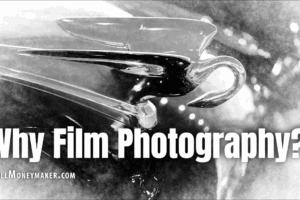When we talk about producing fine art photography, there are many different aspects that are routinely covered. Things like composition, the use of color, expression, and emotion are all things that we use to make images more powerful. One thing that is rarely talked about, however, is symbolism, which is strange because, in my opinion, symbols are quite possibly the most powerful tool at your disposal.
What is symbolism? In a nutshell, a symbol is something used to represent something else, something meaningful, so it follows that symbolism is the use of symbols to express the meanings that you desire.
The most interesting thing about symbolism is that it extends across all forms of art and design. Some symbolism crosses cultural boundaries, and other symbols are only known to the people of a particular culture, living in a particular period of time.
The Victorians, for instance, had the Language of Flowers. It was commonly understood during that period and culture that you could use flowers and their associated symbols to send messages to people. A sprig of the baby’s breath flower represented purity and innocence, while a pink rosebud represented a new love. Combine the two, and the receiver of these flowers understood that the sender was sending a message of pure, innocent love.
You can see these same sorts of meanings throughout the art world. In Medieval and Renaissance art, for instance, you could look at horses within paintings to see the deeper meaning. Pale horses represented death, black horses stood for famine and red horses meant war. Candles tended to represent faith when burning, or death or corruption when painted as extinguished. Baskets of fruit meant abundance, and more, particular fruits told a tale about the kinds of abundance that the painting’s subject enjoyed. Lemons, for example, were a rare and expensive fruit, so if you saw them, you knew that you were looking at wealth symbolized.
Of course, nowadays, we don’t recognize all of these symbols the way the people living in those times did. Our culture and worldview is utterly different, so we have our own symbols. In fact, many modern artists seek to break away from common symbolism and decide to make their own meaning with objects, colors and more. Let’s take a look at modern symbolism and how you can use it to great effect in your work.
Common Symbols in Modern Photography
Symbolism spans a broad range of not only subjects, but colors and other qualities that can be used to create something meaningful. I’ve talked before about the meanings of colors, for instance. This is one type of symbolism that you can use to build on a theme or hint at emotion. Blue, for instance, is a calming color and makes people think of the sky, while orange is an exciting color that is sometimes used to represent ambition.
Beyond colors, the use of light and shadow can be symbolic. High contrast images can represent good and evil, day and night, duality, opposites and so much more.
Then there are objects. Lakes are sometimes used to represent mystery or depth, and just as Renaissance painters taught, food still represents abundance. Here are other common symbols for you to think about:
- Eyes can suggest wisdom, intelligence, creativity or understanding.
- Mountains impart a sense of grandeur, and they can be used to suggest ambition or lofty goals.
- Rocks and earth tends feel solid and reassuring.
- The Sun, when pictured, can have a variety of meanings — optimism, divinity, knowledge and more.
These symbols are generalized and as such, are widely recognized across a variety of cultures. Other symbols, however, are most pertinent to the culture that gave rise to them.
To get an idea of what cultural symbols are all about, look no further than the American Flag. On its face, the American Flag represents freedom, liberty, patriotism and so forth. You can use it within photograph as such, or you can use it in a composition to create a larger meaning.
Take a look at Robert Frank’s Americans 1, Parade – Hoboken, New Jersey 1955. Here, the flag is used prominently, as a powerful symbol. Two people are shadowed, one partially hidden by the flag, suggesting that they are less important than the flag itself. This image can mean lots of different things. Perhaps the photographer is saying that Americans themselves are overshadowed and hidden behind the world’s conceptualization of America. You could look at this image and think that perhaps Americans are simply a faceless mass standing in unison behind their country. No matter what you take this image to mean, there is no denying that cultural symbols can be very powerful indeed.
Making Your Own Symbols
There is nothing saying you have to use established symbols within your own work. On the contrary, creating your own symbols is how we, as a culture, develop new symbols, ideas, and meanings. So don’t hesitate to create something of your own and use it to tie your body of work together.
For some photographers, the symbol is an object that is always included in the image. An action figure, a chess piece, a flower, or something else. A photographer may choose to always include the sky in some way, even if it means the sky must be on a reflected surface. When it comes to choosing symbols, it is very hard to go wrong. Simply choose things that mean something to you.
How to Use Symbolism
If you are looking for an answer as to how you can use symbolism, the answer is simple: There is no right way. There is no way to tell a photographer or any other kind of artist how to use symbolism. You, yourself, can look at the works of others in order to better understand the meanings, but in the end, it is a personal choice. The symbols you choose should feel right for the work that you are doing.





